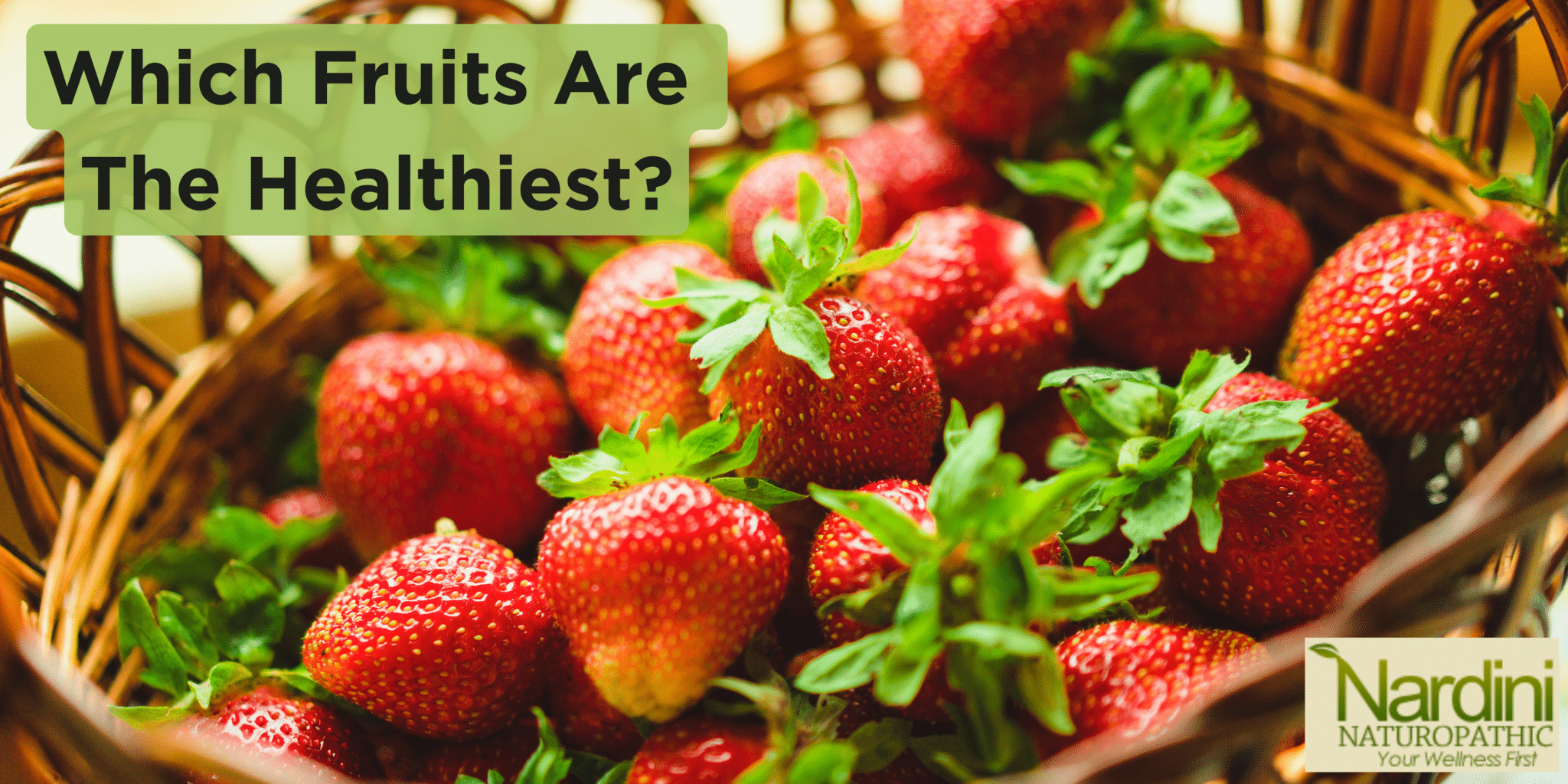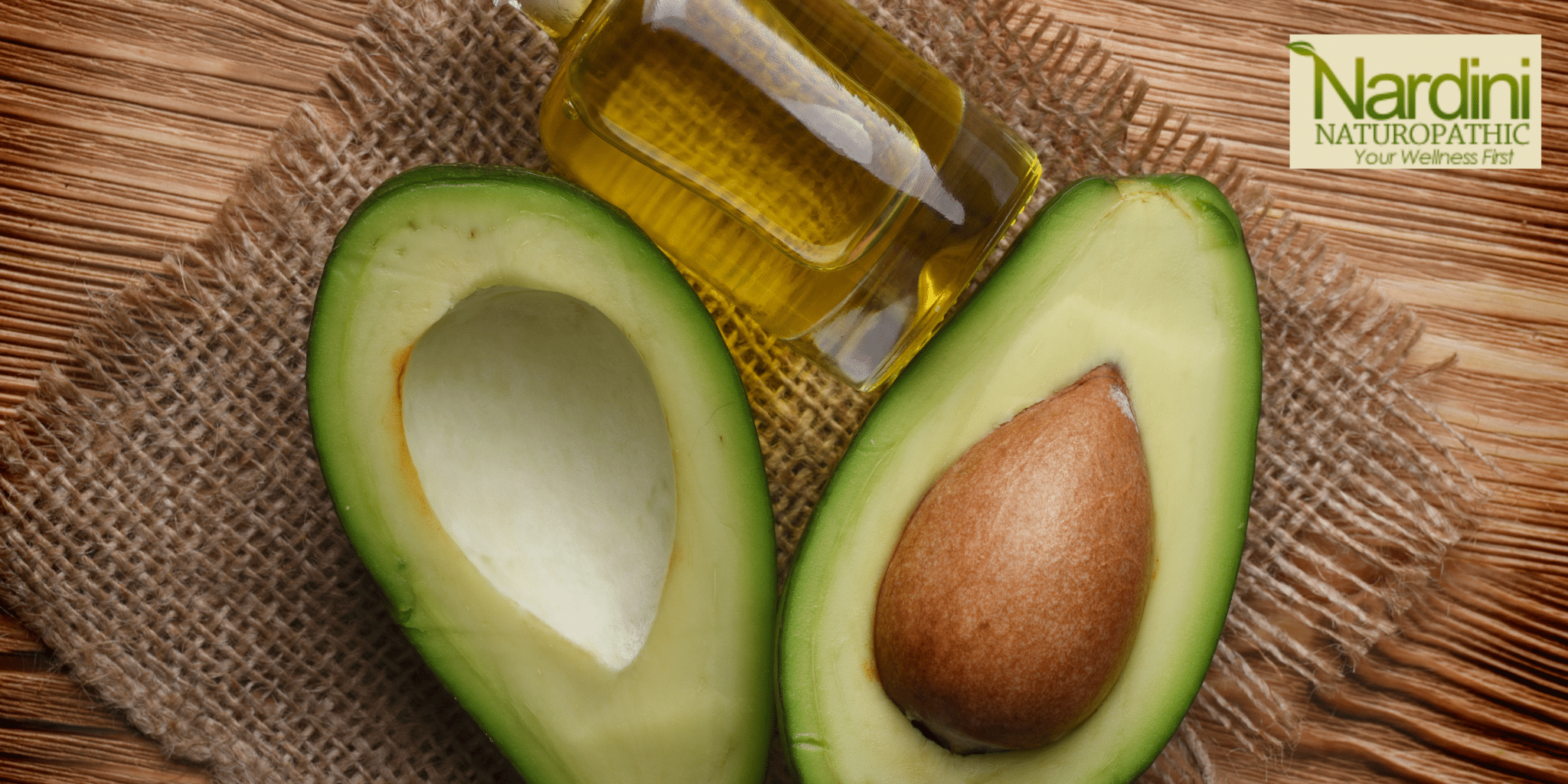“Make sure you get lots of fruits and vegetables!”
That is what we are told by health care professionals, the education system, and the media. But what does that mean? How many of these should be fruit and how many vegetables? And if we eat fruit, which ones are the best to eat?
Especially at this time of year, discussion comes up a lot in my practice about which fruits are the healthiest. There are so many to choose from!
Of course, there are the usual apples, pears, oranges, and grapes and then there are tropical fruits like pineapple, mango, papaya, and banana.
Surely, there will be health benefits to pretty much all fruit. But which ones have the best nutritional profile? Which ones are better for your blood sugar?
Before we get into the details about that, let’s have a look at why fruit can be a healthy choice in general, whether it’s for a snack or part of a meal.
Health Benefits of Fruit
You don’t need to tell people that whole fruits are loaded with health benefits. But, before we discuss which fruits are tops, consider some of the reasons why fruit can be a healthy addition to the diet.
- Easy – no need for cooking or major prep other than peeling or slicing
- Tasty – this is why we eat them, right?
- Hydrating – fruit is loaded with water, especially good on a hot summer day
- Nutritious – fruits contain a range of vitamins, minerals, fibre, and antioxidant nutrients
- Portable – you can take most fruit with you when you’re on the run
- Flexible – they can be eaten as a snack, added to salads and healthy desserts, or blended into smoothies
This is all great, but surely some fruits are better than others, right?
One of the biggest pitfalls of fruit is their sugar content. High sugar fruits may do more harm than good if over-consumed. This is especially true for people managing diabetes.
So, which fruits pack the most flavour and nutritional punch while not slamming you with a tonne of sugar?
Here is my list.
Five of My Favourite Fruits
1. Raspberry
Raspberry is a fruit harvested from the Rubus genus of plants in the rose family. It is cultivated in temperate zones throughout the world and sold widely. The red raspberry is most commonly available, but black and purple varieties are also found.
Raspberries are not usually the first fruit that people reach for when they get a sweet craving. But it’s certainly one that doesn’t take much convincing to eat when it’s suggested over other, sweeter fruits.
They become very impressive when we look at their nutrient content. A cup of raspberries is loaded with 8 grams of fibre and contains more than half the recommended daily intake of Vitamin C. They also contain a fair amount of manganese and smaller amounts of many other vitamins and minerals.
Raspberries contain substantial number of antioxidants in addition to their Vitamin C, like quercetin, ellagic acid, and other polyphenols. These compounds reduce the damage to cells caused by oxidative stress, a process promoted by various toxins and even psychological stress.
In fact, A 2016 review of the research suggests that red raspberry consumption may protect against cardiovascular disease, diabetes, obesity, and dementia, likely due to the reduction of oxidative stress1.
One of the best things about raspberries are their relatively low sugar content – a cup contains only 6.7 grams of “net carbs” (the total carbohydrate minus the fibre). This makes them particularly good for those struggling with blood sugar management issues, including diabetes and obesity.
Raspberries are easy to find at grocery stores and a snap to prepare. Just open the package and pop them in your mouth! Alternatively, you can add them to yogurt or blend them into a smoothie.
2. Strawberry
Strawberries are a favourite all year round, but especially in the late spring and early summer when they are in season and fresh. There are countless varieties of this red fruit that are grown all over the world, with the largest producer being China.
Like raspberries, strawberries a good source of a variety of nutrients. A cup of strawberries sports 89 mg of Vitamin C, 233 mg of potassium, and about 20 mg of magnesium. They only have 3 grams of fibre yet their net carb total is only 9 grams per cup, making them a good option for those looking to maintain healthy blood sugar levels.
The Vitamin C and other phytochemicals in strawberries may be helpful for the cardiovascular system by protecting the blood vessels. A review article in 2016 found that strawberries can reduce inflammation and oxidative stress. This may lower the risk of heart disease, diabetes, obesity, and cancer2.
Strawberries are excellent as a natural sweetener in yogurt and chia seed pudding and can be blended into a smoothie. Soft, not overripe, red berries in season are the most nutritious and certainly the most flavourful!
3. Lemon and Lime
I’ve thrown these two in together because they share many health benefits and, well, they can be hard to tell apart (both an unripe lemon and a ripe lime are a yellow-green colour). They are grown in many subtropical regions throughout the world but are primarily produced in India, Mexico, and China.
As citrus fruits, these two consist mainly of water. They are also excellent sources of Vitamin C, potassium, Vitamin B6, and fibre. A cup of lemons contains only about 5 grams of sugar; a lime has even less sugar per cup at 3.3 grams. This makes them suitable for adding to drinks as slices or even juiced without adversely affecting blood sugar.
Lemons and limes are also rich in antioxidants, like hesperidin, limonoids, and quercetin. Hesperidin and other citrus flavonoids may be helpful for preventing plaque build-up within the arteries3. Quercetin has been shown in research to be beneficial for preventing and treating allergies4.
The citric acid in both fruits may be helpful for preventing and treating kidney stones.
One of the hardest things to do sometimes, especially in the winter and summer, is to get enough water. Lemons and limes provide a great way to get that accomplished.
Squeezed to make lime- or lemonade or sliced up and tossed into spring water, these citrus fruits make hydration more appealing. If juicing, make sure to eat some of the pulp for the fibre content.
The zest is a tangy and nutritious addition to healthy desserts.
4. Kiwifruit
Kiwifruit presents us with another great fruit option. Although many people refer to these fruit as “kiwis”, they are not actually the birds they are named after nor are they residents of New Zealand.
Speaking of New Zealand, kiwifruit is grown there as well as many other temperate zones in the world, although it is native to China.
Like the other fruits we’ve discussed, kiwifruit is high in Vitamin C. In fact, 100 grams of the fruit’s flesh provides over 80% of the recommended daily intake of Vitamin C (about 67 mg of C in 100 grams of kiwifruit). They’re also full of other nutrients such as Vitamin K, copper, Vitamin E, and fibre.
Kiwifruit are about 11% net carbs, which might seem a bit high, but keep in mind that 1 standard-sized kiwifruit would only give you 5-6 grams of net carbs. Not a deal-breaker.
In addition to the above nutrients, kiwifruit is also packed with plant chemicals called carotenoids, like lutein, zeoxanthin, and beta-carotene. Research shows that carotenoids may be beneficial for prevention and/or treatment of heart disease, stroke, and, possibly cancer5.
The fibre in kiwifruit can also be extremely beneficial for the digestive tract, especially for those suffering with constipation. A study in 2020 showed stool consistency and bowel straining were decreased in the group consuming 2 kiwifruits per day6.
There a few varieties of kiwifruit, but the most common ones have a fuzzy skin. Peel this before enjoying the fleshy part sliced up in a salad, mixed with other berries in a fruit bowl, or blended into a protein smoothie.
5. Avocado
Our last entry on this short list – avocado – seems like it’s not a fruit at all. Isn’t fruit supposed to be sweet? It turns out that avocado is, indeed, a fruit and it’s so healthy that I just had to add it to the list.
Avocadoes, sometimes called alligator pears (just look at their skin!), are native to the Americas and considered a berry with one very large seed in the centre. They were first domesticated by the indigenous people of central America. Today, they are mainly cultivated commercially in Mexico, Chile, and California.
Nutritionally, avocadoes are a superstar! They are packed with essential nutrients, like Vitamin K, copper, several B Vitamins, potassium, Vitamin E, Vitamin C (although not as much as the other fruits on our list), and fibre.
In fact, one medium-sized avocado, which is about 7 ounces or 200 grams, contains 14 grams of fibre! This leaves an avocado with only 3 grams of net carbs – great for maintaining healthy blood sugar levels.
The nutrient that really makes avocadoes stand out from the others is its fat. One avocado contains 30 grams of fat. That rivals the nuts on my list of healthiest nuts. The fat content of an avocado is mostly in the form of monounsaturated fats, though it does contain some polyunsaturated fat, like the omega-6 variety.
Avocadoes contain many antioxidant compounds, such as polyphenols and carotenoids and, of course, Vitamins C and E. They can help relieve oxidative stress on the body, which, research suggests, is an important factor in many disease conditions7.
Although they are relatively high in calories, they may aid in weight loss for those who are overweight8. Their very low sugar and carb content helps stabilize blood sugar and the high fibre levels in an avocado help you to feel full after eating one.
Avocadoes are easy to prepare, requiring no cooking. They can be sliced up and added to salads or mixed into a protein smoothie to thicken it without adding all of the sugar that a banana would.
The toughest thing about avocadoes is getting a ripe but not over-ripe one. When the avocado’s skin is dark and the fruit gives a little when pressed on but is not soft, then you’ve got one that’s ready to eat!
Honourable Mentions
Blackberry, Blueberry – only consume moderate amounts of blueberries as they are a bit sugary.
Dishonourable Mentions
Mango, Banana, Grape – these are all high in sugar, so limit consumption.
Things to Consider About Fruit
A popular way to consume fruit, especially in the summer, is to drink the juice. However, this can be a bit of a trap. Although, fruit juice may be high in vitamins, minerals, and water, it is also loaded with sugar. There are a few exceptions to this, namely lemon and lime juice, which contain only a little sugar.
The best way to eat fruit is when it’s whole. The fibre in the fruit slows down the absorption of the sugar in the gut, reducing the spiking effect on the blood sugar.
Dried fruit can have a similar negative effect on the blood sugar since it’s easy to down several pieces worth of dried fruit in one go, making the total sugar consumed potentially massive. Fruit that is dried is often preserved with sulphites, which increase the body’s toxic burden. So, it’s best to skip dried fruit.
Many fruits are heavily sprayed with pesticides to control insect pests. Buy fruits organic whenever possible, especially the ones on the “dirty dozen” list of produce with the highest pesticide levels9.
As per common sense, if you have a severe allergy to any fruit, avoid it. And limit any fruits that you may have a minor sensitivity to. If you are not sure if you have a problem with any fruits, consult with a qualified health practitioner who can help you determine if you do. In some cases, it may be the pesticide residues on the fruit rather than the fruit itself that cause the issue.
To answer the question that I posed at the start, “How many fruits and vegetables should I eat every day?”: there is no exact answer for everyone, although 10 servings total per day will serve as a guideline. Of that, about 80% should be vegetables and about 20% fruit. Of course, that depends on which fruits and vegetables you choose. If you stick to the fruits on my list, you can likely get away with eating more than 2 servings per day.
Fruits are an excellent way to get your nutrients and stay hydrated. As with most things in life, there are benefits and drawbacks to them. If you enjoy the fruits on my list above, you can be sure to get more of the former with some awesome flavour to go with it!
1.https://pubmed.ncbi.nlm.nih.gov/26773014/
2.https://pubs.acs.org/doi/full/10.1021/acs.jafc.6b00857
3.https://onlinelibrary.wiley.com/doi/pdf/10.1111/j.1527-3466.1999.tb00011.x
4.https://www.ncbi.nlm.nih.gov/pmc/articles/PMC7227109/
5.https://www.ncbi.nlm.nih.gov/pmc/articles/PMC6250988/
6.https://journals.lww.com/ajg/fulltext/2020/10001/s0454_randomized,_comparative_effectiveness_trial.455.aspx
7.https://pubmed.ncbi.nlm.nih.gov/29731617/
8.https://www.ncbi.nlm.nih.gov/pmc/articles/PMC6578444/
9.https://www.ewg.org/foodnews/
Book An Appointment With Nardini Naturopathic
Are you concerned about your blood sugar or cardiovascular health?
Or perhaps you’d like a review of your overall diet to see where you could be doing better.
Maybe you have food allergies or intolerances and worry you aren’t getting enough nutrients because of your restricted diet.
I’m Dr. Pat Nardini, a naturopathic doctor who offers nutritional counseling services to help ensure all of those gaps in your diet are filled, and that you’re getting enough of all the important nutrients which your body needs to function at its best.
Contact me today for more information, or book a free 15-minute consultation where I will help you understand how naturopathic medicine can help you.
If you have questions about naturopathic medicine, or you’d like to take your first step into the world of naturopathy, contact us at Nardini Naturopathic, and let’s book an appointment.
Yours in health,
Dr. Pat Nardini, Naturopathic Doctor
320 Danforth Ave suite 206,
Toronto, ON, M4K 1N8
-https://g.page/NardiniNaturopathicDanforth
Dr. Pat Nardini, ND is a licensed doctor of naturopathic medicine in Toronto, Ontario. He offers science based natural health solutions with a special focus on thyroid conditions.


